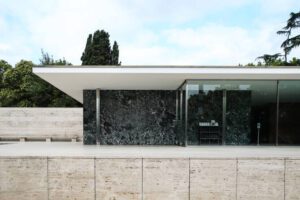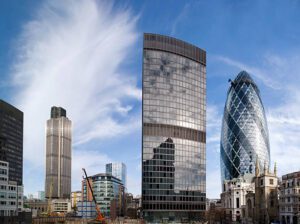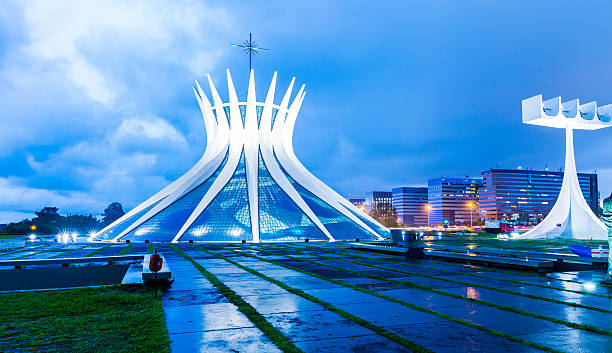These well-known builders have left their imprint on the world for millennia. Their distinct architect styles can be seen in everything. From Mies Van der Rohe’s minimalist design to Antoni Gaud’s elaborate works to Frank Gehry’s glossy, undulating forms. By reflecting the fashions of the moment, architecture can characterize an era.
These are the most well-known architects, whether or not you appreciate their styles. Use our guide to learn more about these industry heavyweights. And if you get the chance, pay a visit to any of these landmark buildings in person. Even if these structures look incredible in pictures, nothing compares to actually viewing the creations of renowned architects.
Antoni Gaudi
 (Photo from iStock)
(Photo from iStock)
There, over the course of his whole career, Gaud erected the most well-known of his creations, the 1883 cathedral known as La Sagrada Familia. Which is still under construction today. His ornate design, which combined aspects of Baroque, Gothic, Moorish, and Victorian architecture. Typically featured beautiful tile work and took its cues from organic shapes. Both the undulating facade of another of his well-known works. The apartment building known as the Casa Milla (influenced by the multi-peaked mountain just outside of Barcelona called Montserrat). And the tree-like columns that support the large interior of his church can be recognized as examples of these influences. Later modernist generations would be significantly influenced by Gaud’s work.
Frank Lloyd Wright
Wright, a native of Wisconsin, revolutionized 20th-century architecture, and his upbringing in the Midwest significantly influenced the way he perceived the world. Wright developed the Prairie House style in opposition to the dominant Victorian aesthetic. This emphasized dark décor and ornate ornamentation both inside. And out and was inspired by the low-lying buildings that dot the American plains. Wright replaced it with simple geometries that put a focus on horizontal planes. His most well-known structure, Falling Water, a mansion in Bear Run, Pennsylvania. That he constructed in 1935 for Pittsburgh department store tycoon Edgar Kaufmann, has stacked rectangular balconies that appear to hover over the natural waterfall integrated into the house. Wright would adopt curvilinear aspects later in his career.
Mies Van der Rohe
 (Photo from iStock)
(Photo from iStock)
Known for believing that “less is more,” German architect Mies Van der Rohe reduced building to its most basic geometric forms, paving the path for minimalism. In order to define the appearance of his buildings. He eliminated all signs of embellishment and instead relied on the inherent properties of materials like steel and plate glass. This strategy evolved from another tenet—form equals function—promoted at the Dessau Bauhaus. Where he served as the final director until the Nazis shut it down. His plans prioritized efficiency and rationalism as the path to beauty. An approach epitomized by The Barcelona Pavilion, created to host Germany’s exhibit for the 1929 International Exposition in Barcelona.
Philip Johnson a famous architect
Johnson had a significant influence on the industry as the department’s first director, serving as a gatekeeper who helped to mould architectural trends from 1935 onward. He was a designer in his own right. However, it’s fair to argue that he improved on rather than created anything entirely new. But in a few instances, most notably in the house he constructed for himself in 1949. His creations became famous. Mies Van der Rohe’s philosophy is distilled in the home, and Johnson himself said it was “more Mies than Mies.” The Glass House blurs the lines between inside and out.
Eero Saarinen
 (Photo from iStock)
(Photo from iStock)
The International Style, which has become the standard aesthetic for new corporate headquarters. And governmental office buildings worldwide, was born out of the Bauhaus’s emphasis on straight lines throughout the post-war period. In this context, Eero Saarinen’s mid-century designs acted as a welcome corrective to the modernist ideal of simplicity Which had essentially turned into a sort of corporate conformity. Saarinen used swooping curves instead of the uniform box used by the International Style. Giving his architecture a sense of lofty transcendence—particularly in his 1962 JFK terminal for the now-defunct TWA airlines. Its gull-wing roof and exhilarating interior are still thrilling, but Saarinen’s signature sensation of architecture taking flight permeates the entire structure.
Richard Rogers a well known architect
Leading advocates of the look included British architect Richard Rogers. With its heating and plumbing systems exposed as the façade and an external escalator with a glass enclosure scaling the height of the building. This building, intended to serve as Paris’s primary institution for Modern and Contemporary Art. Like a structure turning inside out. When designing the headquarters for Lloyd’s of London, another of Rogers’ famous structures, he followed a similar strategy.
Norman Foster
 (Photo from iStock)
(Photo from iStock)
British architect Norman Foster began his career as a co-worker of Buckminster Fuller, the famed futurist and inventor of the geodesic dome. Foster later supported Frank Lloyd Wright, Ludwig Mies van der Rohe, and Le Corbusier. Foster’s most famous skyscrapers share comparable façade surface treatments, suggesting that the latter’s tessellated pattern of triangle forms served as inspiration. A prime example is the commercial skyscraper called The Gerkin, which was built in 2004 and opened in the financial district of London at 30 St Mary Axe. Hence, in the same way that the Eiffel tower is linked with Paris, its pickle-like shape that tapers to a point has made it an iconic landmark.
Santiago Calatrava a dignified architect
If such things existed, his constructions frequently resemble the rib-cages of robotic ancient dinosaurs. He certainly drew international notice for his projects, which also earned him a reputation for astronomical cost overruns. But there’s no doubting that Calatrava is one of the most distinctive architects now at work, as seen by his best-known design, the Transit Hub for the World Trade Centre.




